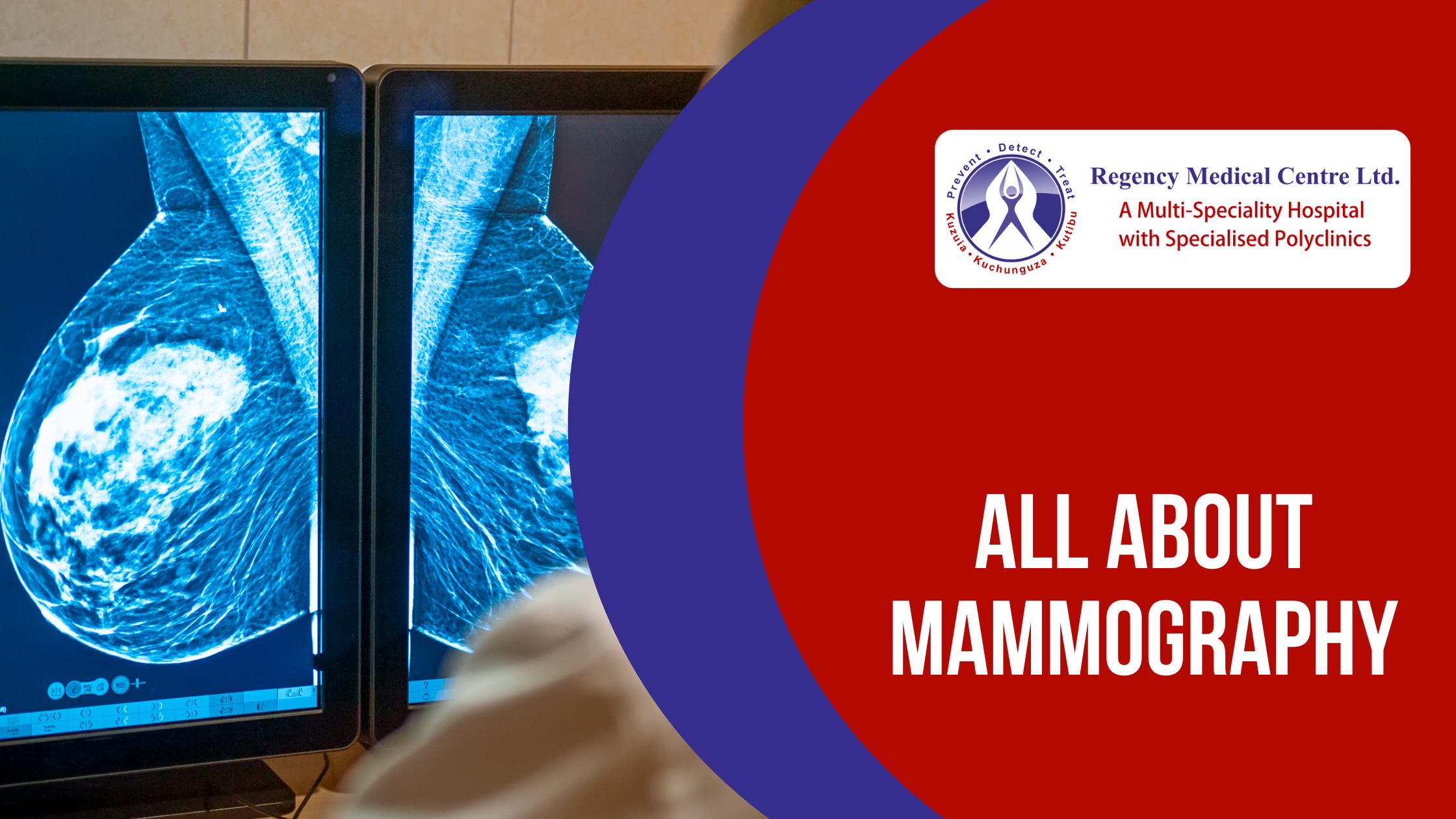All About Mammography
252 viewsAccording to the U.S. Food and Drug Administration, it is believed that more than 40 million mammograms are performed every year. The increasing awareness amongst people towards their health and regular screenings have helped in improving the healthcare conditions worldwide.
But on the other hand, the World Journal of Surgical Oncology published a report, which stated that currently, Africa had the highest age-standardized breast cancer mortality rate globally. So, it’s advisable to work towards increasing awareness and decreasing the cases of breast cancer using timely screenings.
What is Mammography?
When low-dose x-rays are used to capture specific breast images, for the purpose of detecting cancer, the process is known as mammography. A mammogram is an X-ray picture of the breast. This is used to check early signs or no signs of breast cancer.
The Common Procedures of Mammography
If a woman is experiencing symptoms such as a lump, pain, skin dimpling or nipple discharge, it can be detected using mammograms. Following are the three common procedures of mammography used for detection.
Screening Mammography
- Screening Mammography is recommended every year for women who are postage 40. Research has shown that these annual mammograms lead to early detection of breast cancer and help it cure.
Diagnostic Mammography
- If a patient has abnormal clinical findings such as nipple discharge or breast lumps, it can be evaluated using Diagnostic Mammography. Hence, this type of mammography is advisable when you are experiencing minimal symptoms.
Three Recent Advances in Mammography
Medical science is advancing at a noticeable pace and these advancements have helped in eradicating quite a few diseases and decreased the curb of other deadly diseases.
Digital Mammography
- Also known as full-field digital mammography, in this type of mammography, the x-ray film in the mammography system is replaced by electronics that convert x-rays into mammographic pictures of the breast.
Computer-Aided Detection (CAD)
- If there are any abnormal areas of density, mass, or calcification that may indicate the presence of cancer in digitized mammographic images, it is known as Computer-Aided Detection.
Breast Tomosynthesis
- Also known as three-dimensional mammography or digital Breast Tomosynthesis, in this advanced form of detection, multiple images of the breast are captured from different angles and reconstructed to a three-dimensional image set.
Common Myths About Mammogram

We all are revolving around tons of information right from the minute we wake up. Quite a few of this information is misleading as we do not have access to authentic sources of everything. Here we have also busted a few common myths based on Dr Sarah Zeb’s research that you might have heard about mammograms.
- A mammogram is not needed if I am not experiencing any symptoms.
It has been observed that more than 75 percent of women who have been detected with breast cancer have no symptoms or family history. Hence, it’s advisable to get a mammogram screening if you’re over the age of 40.
- Mammography exposes an unsafe level of radiation.
The Mammography screening tool is regulated by the Food and Drug Administration, Mammography Quality and Standards Act, and other governing organizations, like the American College of Radiology. Hence, though mammography does radiation, it is in a very small proportion according to the medical guidelines and doesn’t harm. Though, it is highly advisable that the mammogram is performed through certified regulating agencies.
- A 3D mammogram is the same as a traditional mammogram.
When compared with a 2D mammogram, a 3D mammogram provides higher quality images and is 40 percent more effective in detecting the early stages of cancer. At the same time, it has shown a 40 percent decrease in false alarms from screening.
- A screening mammogram is guaranteed to find all types of breast cancer.
At times, women have dense breasts or dense tissues which make it difficult to detect cancer through screening. Hence there are certain exceptions in a screening mammogram too. In such cases, a breast ultrasound or breast MRI is recommended.
- If I had undergone one mammogram screening last year, I don’t need another one this year.
Mammography is just a preventative measure and does not ensure that it will cure if you have breast cancer. Hence it is highly advisable to undergo regular screenings to increase the chances of detection and cure can be done.
- If I need to undergo a mammogram, I need a doctors’ validation.
Regular mammogram screenings are recommended to everyone postage 40. Hence you can go to a screening even if the doctor has not recommended or prescribed it.
In the end, we all know how prevention is better than cure. Regency Medical Centre has always been a step ahead in facilitating its patients with all the required high-scale facilities at their doorstep. They have recently installed a mammogram screening machine for easy access for the women of Tanzania. Now you can get in touch and schedule your annual appointments and protect yourself as well as your loved ones from breast cancer.


